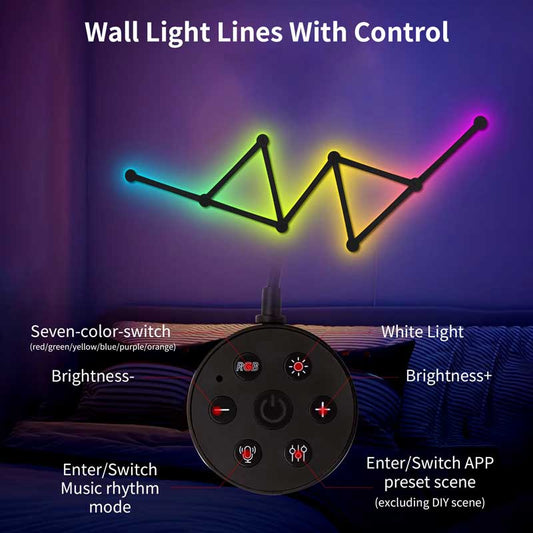What can I do with my garden in shade?
Share
A garden in shade can be just as beautiful and productive as one with full sun. While the lack of direct sunlight limits certain plant options, there are still plenty of ways to make the most of a shaded space. Here are some ideas for transforming your shaded garden into a thriving, serene oasis:
1. Choose Shade-Tolerant Plants
Certain plants thrive in low light conditions, so selecting the right plants is key to making your shaded garden flourish. Some great options include:
- Hostas: These lush, leafy plants come in various colors and thrive in shady conditions.
- Ferns: Ferns are perfect for shaded areas and can add a soft, textured look to your garden.
- Astilbe: This flowering plant thrives in shade and produces beautiful, feathery blooms.
- Heuchera (Coral Bells): With colorful foliage, this perennial can brighten up a shady garden.
- Japanese Forest Grass: Known for its graceful, arching shape, it works well in shady spots.
- Bleeding Heart: A charming perennial with heart-shaped flowers that thrives in the shade.
2. Add Foliage for Color
If your garden lacks sunlight, vibrant foliage can bring plenty of color. Consider plants with multicolored leaves, such as:
- Coleus: This plant has vibrant, colorful leaves that can survive in partial to full shade.
- Brunnera: Known for its silver-colored foliage and small blue flowers, it’s perfect for shaded gardens.
- Epimedium: Sometimes called "Barrenwort," this plant has heart-shaped leaves and delicate flowers, making it a great option for shade.
3. Create a Shaded Seating Area
Transform your shaded space into a relaxing retreat by adding comfortable seating. Choose materials that are durable and comfortable in shaded, damp environments, such as:
- Wooden or metal benches
- Hammocks or swing chairs
- Outdoor cushions for added comfort
- A hammock chair for a cozy, relaxed vibe
Add a small table to hold drinks or books, and use soft furnishings like throws and pillows for added comfort.
4. Add Decorative Elements
A shaded garden can feel like a peaceful, cool retreat, so consider adding decorative touches to enhance the ambiance:
- Garden sculptures: Choose pieces that fit the mood of your garden—natural stone, wrought iron, or whimsical sculptures can make a shady garden feel more inviting.
- Water features: A small fountain or birdbath can create a calming atmosphere and attract wildlife.
- Fairy lights or lanterns: Use soft outdoor lighting to bring your shaded space to life in the evenings.
- Mirrors: Hanging a garden mirror on a shaded wall can create the illusion of more light and space.
5. Add a Pathway
Create a pathway using stone, pebbles, or wooden stepping stones to guide visitors through your shaded garden. A well-defined path can make a shaded area feel more structured and help guide the eye to different plants and features.
6. Create a Shade Garden with Layered Plants
To make your shaded garden feel more dynamic, use a mix of plants with different heights, textures, and colors. Here are some ideas:
- Tall Plants: Use ferns or tall grasses that can grow up towards the canopy.
- Mid-Level Plants: Hostas, astilbe, or Japanese maple shrubs work well at mid-level height.
- Ground Cover: Moss, ivy, or creeping thyme can fill in the lower spaces, adding texture and greenery.
This layered effect can help to maximize the space and create visual interest.
7. Install a Pergola or Trellis for Vertical Growth
If your shaded area has a little more vertical space, you can install a pergola or trellis and grow climbing plants like:
- Clematis: This flowering vine can grow in partial shade and offer a splash of color.
- Wisteria: Beautiful for a shaded, vertical garden feature, with cascading flowers.
- Hops: These climbing plants thrive in shade and provide interesting texture.
A pergola also provides an opportunity to hang outdoor lights or plants in hanging baskets, adding another level of depth to the space.
8. Consider Shade-Loving Vegetables and Herbs
Believe it or not, you can still grow some vegetables and herbs in shady areas:
- Leafy greens: Spinach, lettuce, and kale can grow well in partial shade.
- Herbs: Some herbs, like mint, parsley, and chives, can thrive in shaded conditions.
- Radishes: Radishes are another vegetable that can grow in a shaded garden.
Use containers or raised beds to create a productive garden in shaded corners.
9. Build a Shade-Friendly Lawn
A full lawn may struggle in the shade, but certain grasses are better suited for low-light conditions. You can also consider ground covers like moss or creeping thyme that work well in shaded areas and require less maintenance than a traditional lawn.
10. Install Lighting for a Magical Effect
Lighting in a shaded garden can create a magical atmosphere during the evenings. Here are some lighting ideas:
- Solar-powered lights: They are a simple and energy-efficient way to add ambiance to shaded spaces.
- Fairy lights or string lights: Hang them along fences, trees, or trellises for a soft glow.
- Up-lighting: Point lights upwards to highlight interesting trees, plants, or sculptures.
11. Consider the Temperature
Shaded gardens tend to stay cooler, so use cool-colored furniture, light-toned materials, and reflective surfaces to bounce light around. Consider white, light gray, or pastels for any furniture or planters you introduce to avoid making the space feel too dark.
12. Wildlife-Friendly Garden
A shady garden can be a perfect spot for attracting wildlife. You can install birdhouses, bird feeders, and butterfly-friendly plants like Columbine or Foxglove to encourage more creatures into your garden. The cool, quiet atmosphere is ideal for attracting birds, butterflies, and other wildlife.
Conclusion
A garden in shade may require some different considerations than a full-sun garden, but there are numerous ways to enhance its beauty and functionality. Focus on choosing the right plants, adding texture and layers, and incorporating decorative elements and lighting to bring your shaded garden to life. Whether you want a lush, leafy retreat or a functional garden space, a shady area can be transformed into a tranquil and visually interesting oasis.




